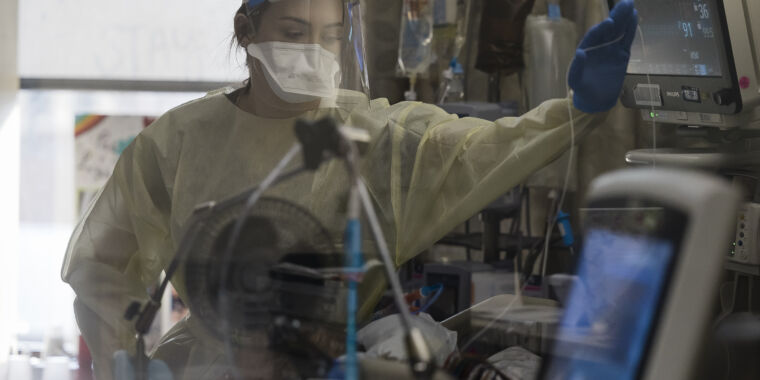

Spread of COVID-19 within US hospitals hit a record high in January, with more than 3,000 hospital-acquired infections each week during the month and a peak of over 4,300, according to an analysis of federal data by Politico.
The surge of hospital transmissions mirrored the towering wave of cases in the overall population driven by the ultratransmissible omicron variant. The previous record for hospital-transmission of COVID-19 occurred in January 2020 when federal data caught over 2,000 infections per week within hospitals.
Still the numbers overall are likely to be significant undercounts given that they only capture patients who spend 14 consecutive days in a hospital and become infected during their stay. The data does not account for shorter stays or people who test positive after discharge.
Politico noted that the data also does not indicate which hospitals had the highest transmission. And the data doesn’t capture how the pandemic virus spread to patients within hospitals, i.e., how much was spread from health care workers to patients, patients to patients, or visitors to patients.
A variety of factors could have contributed to in-hospital spread, including limited availability of COVID testing and people spending long periods in crowded waiting rooms as some health care facilities became overwhelmed during the omicron surge. Lack of enforcement of masking in hospitals by patients and visitors may have also been a source of infection.
Another possibility is loosened guidance for infected health care workers. In December, the Centers for Disease Control and Prevention eased guidance for health care workers who tested positive for COVID-19. In crisis situations, the CDC allowed for infected health care workers to return to work without isolating or testing negative. However, health care workers were still expected to wear high-quality N95-grade masks, which would minimize spread of the virus.
Anonymous officials told Politico that the CDC is investigating the cause of the surge in hospital infections. But while there’s room for improvement in transmission prevention measures, outside experts noted that the rate of infections within hospitals was very low relative to the rate of infections out in communities. Getting infections down to zero is almost impossible.